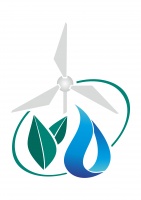Comparison of practices
| Название практики | Increasing water availability of pastures by constructing sardobas | Holding the Integrated Water Resources Management Olympiad (Academic Competition) |
|---|---|---|
| Category | Water resources | Water resources |
| Tool | System for enhancing water availability | |
| Field of application |
|
Use of water resources |
| Usability of practice for adaptation to climate change | Moderate | Low |
| Implemented by | Ministry of Nature Conservation of Turkmenistan |
Kyrgyz-Russian Slavic University (KRSU) |
| Used by |
Country: Turkmenistan |
Country: Kyrgyzstan |
| Local specifics | 17,238 ha of barkhan (sand dune), takyr (dry-type playa) and solonchak (moist-type playa) sites of the Kara Kum Desert; deep ground water occurrence |
|
| Practice usage period |
Start date: 01.01.2012 End date: 31.12.2016 |
Start date: 01.02.2017 End date: 31.12.2017 |
| Problem solved through this practice | Desertification and decreased productivity of desert pastures due to over-grazing around existing cattle watering sites |
Insufficient level of objectivity while selecting candidates, i.e. selection of final candidates not based on their knowledge and skills but illicitly |
| Tools used in the practice | Technology of building sardobas (stone-dome covered water collection and storage reservoirs) to enhance pasture water supply |
Technique of knowledge assessment |
| Description of the practice and its results | Main actions:
Actions:
Results:
|
Actions: The participants were offered to undergo 2 exams (written and oral) within the framework of the Olympiad. Finalists of the written test could go on to the oral exam. Results: 1 student was selected from among the candidates to participate in subsequent Regional IWRM Olympiad and the International Summer School “Methods and Means of Assessing, Modelling and Monitoring the Water and Land Resources of Central Asia” to take place in Almaty City. |
| Lessons learnt and recommendations made | Lessons learnt: Construction of sardobas in takyr areas allows enhancing pasture water supply, thus, leading to the restoration of over-grazed pastures. Recommendations: The practice requires long-term planning and an integrated response with the early-on engagement of desertification experts (designing a set of measures to protect takyrs from sand drifts), state agencies (technical assistance) and pasture users (observance of pasture rotation schemes, prevention of takyrs from contamination and pollution). |
Formally, this competitive practice is routine while selecting the personnel/specialists for international and national projects, but their unbiased selection is not achieved in all cases. Quite often, various types of project participants are selected by way of “pulling strings” or based on the instruction of upper-tier agencies. |
| Source of practice | Traditional tools transferred from generation to generation that proved their efficiency in modern conditions |
|
| Readiness for implementation |
1. Cost of implementation: Low 2. Approximate cost of investment per 1 ha: $1,000-5,000 3. O&M costs: Low 4. Expert support: Needed at implementation stage |
1. Cost of implementation: High 2. Approximate cost of investment per 1 ha: 3. O&M costs: High 4. Expert support: Not needed |
| Brief information on the project | Project title: Responding to climate change risks for dekhan farming system of Turkmenistan on national and local levels. Project duration: 2012-2016. Project goal and objectives: build the adaptation capacity to respond to climate change impacts, including variability on local and national levels. Project beneficiaries: Bori Settlement (over 1,100 people) and Bo-Kurdak Settlement (about 4,500 people). Project implementer: Ministry of Nature Conservation and UNDP |
|
| Funding source | Government of Turkmenistan, Adaptation Facility | Ministry of Education and Science of the Kyrgyz Repub-lic, Global Water Partnership (GWP) in Kyrgyzstan |
| Information sources | http://www.water.kg/index.php/ru/itemlist/category/93-seminary-i-treningi |
|
| Contacts of a person, who filled this form | SIC ICWC |
SIC ICWC |
| Form submission date | 04.04.2018 | 30.03.2018 |




